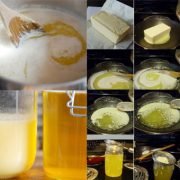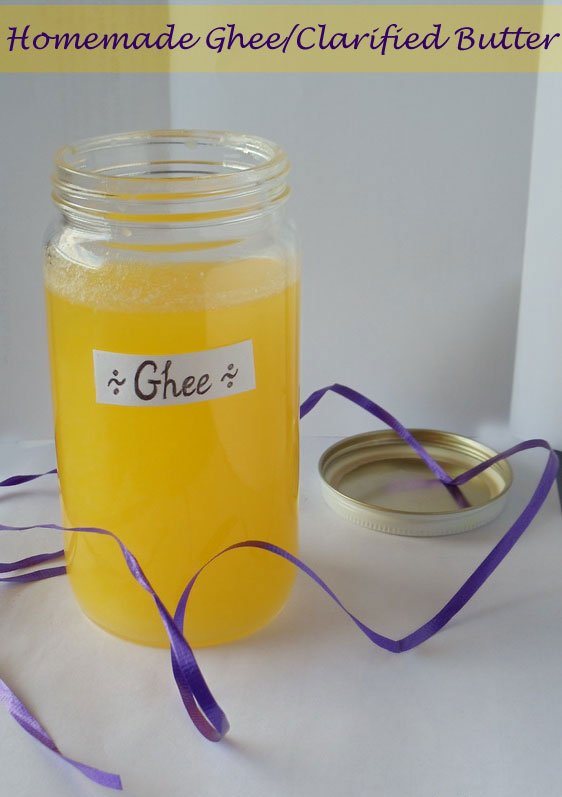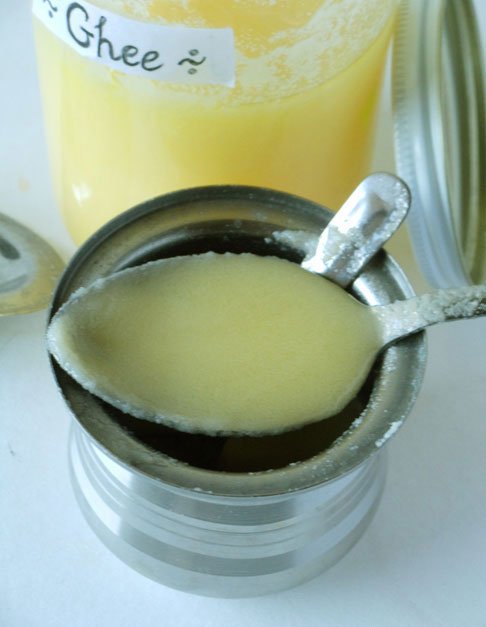Adulteration of Ghee
The market price of ghee is almost 3 times more than the price of edible vegetable oils/fats. The supply of ghee is also far short of its demand. These gaps between price and availability leads to several malpractices. Adulteration of ghee is more common malpractice in India because it will fetch more profit to the traders and also result into increased supply. Two types of adulterants are used in ghee:
- Vegetable oils/fats, and
- Animal body fat
The adulteration of ghee can start at the stage of milk itself. Water emulsion of coconut, groundnut and other cheap oils are added to milk or cream. On souring and churning, these transfer to butter, and thus on boiling of butter or cream pass on to ghee.
i. Adulteration with vegetable oils/fats
The analytical constants of ghee, as discussed in the unit 7, cover a very wide range, permitting fairly high degree of adulteration while still keeping the constants within normal limits. The feeding of various oil cakes or oilseeds and even starvation (under feeding) can also alter the individual analytical characteristics of ghee as to bring perfectly genuine (pure) samples under suspicion of adulteration. Those vegetable oils/fats whose analytical constants are close to ghee and butter oil cannot be detected visually are preferred for adulteration. Coconut oil approaches closest to ghee as far as analytical characteristics (high polenske value and low sponification value, iodine value and butyro refractometer reading). In respect of physical resemblance, hydrogenated fats (edible vanaspati), particularly groundnut, is most preferred. Its melting point is slightly below 37oC, has solid to semisolid consistency and even the characteristic granular appearance of ghee.
(Dr. Ravi Malik convenor on Indian Medical Association commenting on adulteration in Ghee & Oil at News-24)
Realizing the problem of adulteration of ghee with vegetable oils/fats, the introduction of an easily detectable ‘marker’ in vanaspati has been made compulsory by the Vegetable Oil Products Control Order, which is under the control of Ministry of Food andAgriculture, Govt. of India. According to this order, vanaspati shall contain raw or refined sesame (til) oil not less than 5% by weight. The Baudouin colour test enables vanaspati containing sesame oil to be detected in adulterated ghee.
ii. Adulteration with animal body fat
Adulteration of ghee with animal body fat is not so common as with vegetable oil/ fats. Tallow or other animal body fats obtained from slaughter houses are mixed with ghee in different proportions. The animal body fat being hard cannot be detected visually. The chemical characteristics of ghee adulterated with animal body fat falls within normal range of pure ghee, hence their detection is difficult.
Further, it is found that ghee prepared from buffaloes fed with cotton seeds acquire analytical constants similar to those samples adulterated with animal body fat.
iii. Detection of adulteration in ghee
(Equinox Labs demonstrates how to find whether ghee is adulterated or not – NDTV India.)
Several tests have been developed from time to time to detect adulteration of ghee with vegetable oils/fats and animal body fat. Under the PFA rules the Baudouin test, which should be negative is mandatory, whereas Agmark standards recommends that Baudouin test and Phytosterol Acetate test should be negative. There is no reliable simple method, which can distinguish genuine ghee from ghee containing as high as 20-30% animal body fats.
The Baudouin test for sesame oil consists essentially in treating the fat with concentrated hydrochloric acid and adding to the extract a 2% solution of freshly distilled furfural in 95% ethyl alcohol. Development of a permanent pink colour indicates the presence of sesame oil (alternatively vanaspati) in ghee. This test can detect upto 3% sesame oil in ghee.
The Phytosterol acetate test also detects the adulteration of ghee with vegetable oils. Ghee is an animal fat and contains cholesterol while all vegetable oils contain sterols of other types which are together termed phytosterol. This test will not detect the presence of animal body fat, such as tallow’s and lards in ghee, since these also contain cholesterol. The acetate of these sterols have characteristic melting point. Admixture of phytosterol acetate with that of cholesterol sharply raises the melting points of the latter, permitting detection of vegetable oil in ghee.
The sterols are obtained from ghee by crystallization from ethanol of the isolated unsponifiable matter. These sterols are then precipitated from ethanol solution as digitonides using digitonin. On boiling with acetic anhydride the corresponding acetates are obtained, and their melting points are determined. The average melting point of sterol acetate from ghee is about 114.6oC (range 112.7o to 116.4oC) whereas of vegetables fats always more than 125oC. If the observed melting point of a test sample is 117oC or higher, phytosterol from vegetable fat is assumed to be present and test is positive.
Recently many advanced and sensitive techniques, such as thin layer-chromatography, paper chromatography and gas liquid chromatography have been developed for detection of ghee adulteration, but these are expensive and time consuming.






